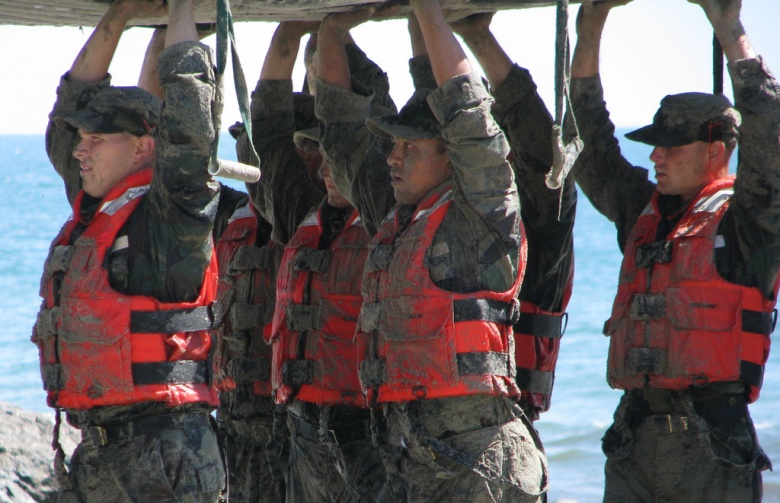
Why America’s Navy SEALs Are More Important Than Ever
Navy SEALs are swimming in dangerous rough seas, Marines are being dropped ashore for amphibious attack or Navy small boat crews suddenly come under dangerous enemy fire–all scenarios requiring immediate “insertion or extraction” missions by Air Force helicopters.
Airmen are now training for these kinds of multi-domain missions in preparation for newer kinds of fast-moving, modern high tech war by conducting “hosting and rappelling” operations over land and water.
The preparations are decidedly multi-domain, meaning they are intended to create synergy and interoperable combat operations between Navy, Marine Corps, Army and Special Operations Forces.
It is not surprising that Air Force Combat Search and Rescue helicopters would be practicing these missions at Lake Theodore Roosevelt, Arizona.
The preparations appear to be part of a strategic effort to respond to a newer threat environment, which will increasingly require the broader deployment of unmanned systems for undersea, surface- and land-warfare operations. The proliferation of Unmanned Surface Vehicles, for instance, may require manned small boat missions to operate in a role of command and control, thereby exposing small groups of sailors to the rigors and dangers of rough seas.
By extension, the Navy’s current Distributed Maritime Operations strategy calls for more disaggregated operations as a way to leverage the benefits afforded by longer-range sensors and advanced networking. These kinds of technology enable forces to disperse more fully and rely upon networking and unmanned systems for mission coordination. This of course may mean that small groups of forces might need to operate at greater distances from host ships or larger mechanized land formations.
This amounts to a growing need for the military to possess extraction capabilities wherein ropes and ladders can be dropped into the ocean or small groups of Marines and soldiers descend into hostile areas. Enabled by improved, and hardened networking systems, small units on land and sea will likely forward operate at greater distances and in more austere environments.
Improved networking and dispersed operations also allow for improved multi-domain operations, wherein Air Force helicopters could more quickly be alerted of a need to extract or insert ground or sea forces in particular combat circumstances.
Major power war by no means precludes the need for small unit combat operations, but may in fact require more of them. Smaller units are more difficult for enemies to detect and can be effective for clandestine reconnaissance missions, rescue operations or even targeted attack missions. Should small, lethal and well-networked attack forces operate in a more dispersed fashion, it might certainly limit vulnerability to enemy attack.
Kris Osborn is the defense editor for the National Interest. Osborn previously served at the Pentagon as a Highly Qualified Expert with the Office of the Assistant Secretary of the Army—Acquisition, Logistics & Technology. Osborn has also worked as an anchor and on-air military specialist at national TV networks. He has appeared as a guest military expert on Fox News, MSNBC, The Military Channel, and The History Channel. He also has a Masters Degree in Comparative Literature from Columbia University.


